![How To Deal With Sensory Overload [9 Tips For Overstimulation]](https://happyrubin.com/wp-content/uploads/2019/12/ik-ben-overprikkeld-150x150.jpg)
Guided Meditation Scripts [List Of 20+ Guided Meditations]
![Guided Meditation Scripts [List Of 20+ Guided Meditations]](https://happyrubin.com/wp-content/uploads/2017/01/geleide-meditatie-tekst-e1484513082134.jpeg)
On this page you will find an extensive collection of guided meditation scripts. These clear guided meditations texts can be used for yourself or in a group. Read on and enjoy!
Contents of this page:
How to use this list of guided meditations:
The meditations below are numbered. You can go through them in sequence, but you can also go straight to your favorite meditation . After you have performed these guided meditations a few times, you will already be able to do them without text and by heart. You can also use them to guide others.
The meditations written out on this page have different effects. With many of these meditations we bring our divided mind to one point: we focus on one ‘ object ‘, which can be a feeling, breath, sound or thought. This allows us, for example, to access silence, relaxation, the power of the now, and we can free ourselves from excessive thinking. All these possibilities are discussed in this page.
Now let’s get to the meditation texts …
1. Getting ready for the guided meditation
- There are several ways to get ready for your meditation. For example, you can adopt an honorable, upright posture. You can also choose to allow the most comfortable position. This is time for yourself, where everything is allowed and nothing is mandatory.
- Focus your gaze on a specific point or close your eyes.
2. Let’s start from that focus
If you lead a guided meditation, you can start applying focus to be able to pay attention to ‘what is’. Introduce the focus by saying the following:
- I ask you now, in this sacred moment that we are sharing together, to focus your attention on a specific object. To use all your senses … and to pay attention … to what you see … to what you feel … to what you hear … These are all objects to focus on.
- And while you focus on such an object, and listen to my voice with anticipation and curiosity, you feel a deep desire to become more alert and present. And I don’t know whether you will feel more and more alert now or only in a few moments and become aware of your surroundings, for example. Very well.
3. Remove the sense of time
By removing the sense of time, only the ‘now’ remains.
- Remove the sense of time, get out. Get present. Then you can use your thinking without getting caught up in it.
- The past shrinks to nothing, and the future shrinks to nothing, and the now expands until it covers everything.
4. Arriving in the here and now (possibly with mantras / affirmations)
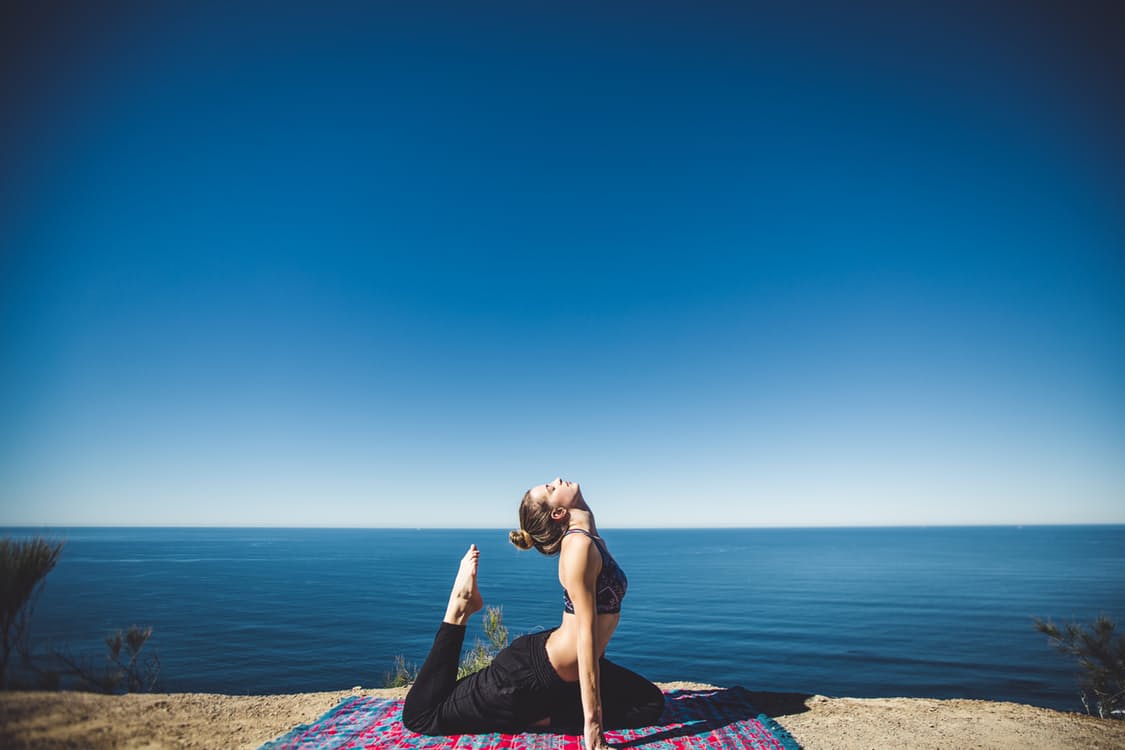
- You are centered, open, aware, connected …
- You know, “I am here.”
- You know, “I am open.”
- Everything is good. Anything may be.
- You can imagine that you are surrounded by a luminous substance – a sea of consciousness. Breathe in that light. Feel that luminous substance fill your body and make it luminous too. Gradually focus more on that feeling.
- Say the following about yourself: “I fully accept you as you are.” Also accept all people as they are. Defending your ego is then superfluous.
- Be still, watch, listen, be present.
- Say or think, “I am.” Be aware of the silence that follows.
- What is the reality here, now? What’s the problem here, now?
- You know that you are in the here and now when your non-speaking is more powerful than speaking, for the words are nothing in relation to the ‘living’ of being.
- Feel your presence. It is not young, old, bad, good, rich, poor or other judgments and qualities.
- Keep the portal to the now open. The peace, the calm, the love. The joy that never leaves you no matter what happens here. You become a bridge between the unconditioned and the world.
- Your whole body is full of life, a living energy field vibrates. You wake up for this moment.
If necessary, use the mantras / affirmations to get into a ‘COACH state’. When you are in a COACH state , you feel like this:
- Centered
- Open
- Attending with awareness
- Connected
- Holding (creating support)
You get into the coach state through affirmations / mantras. Pay attention to …
- Your stomach, feel present in your stomach and say “I am centered “.
- The heart area and feel this area open. Say “I am open “.
- Your head and say “I am present and alert”.
- Your environment in front, behind, above, below, left and right, from the inside to the outside and vice versa. Say, “I’m in touch. “
- Make contact with the space you occupy together and the process you will soon enter together. Say, ” I’m ready .”
Arrive in the silence
What we are doing now is just sitting. Think how crazy it is, but we are afraid to sit. Just sit. We are so afraid of that. Only you and what’s going on inside you. It might be confronting, but ‘just watch the show …’ While you are sitting here, arriving in the silence.
There is silence between my breaths. Fall into that silence.
Have you arrived in the silence? Then you are now in a completely safe, peaceful, comfortable, quiet and protected place. Completely connected to the aare and everything that goes with it. This peaceful, quiet moment was waiting for you. Can you imagine that this peaceful, quiet moment was waiting for you?
Music becomes beautiful because of the distance between the notes. A speech is made good by the correct pause between the words. Take an occasional breath to perceive the silence between the sounds.
I challenge you now to listen to the silence for a while. To find your own answers. To connect with your body. To go to a place that is deeper than those meaningless thoughts telling you that you are not enough and other lies.
The quieter you get, the more you can hear.
The questions we ask ourselves so often can be resolved infinitely better in silence. “How do I get that person back, how do I balance my life, what should I do …” All the answers lie in that silence. You are all you need. Listen to what the silence wants to say to you during these 10 minutes .
The quieter you get, the more you can hear.
Identify yourself with that silence now. In a moment we will continue to meditate from that silence by paying attention to objects in that silence …
The greatest revelation is the silence.
– Lao Tse
6. The first object: noticing the inner voice while identifying yourself with the silence / space
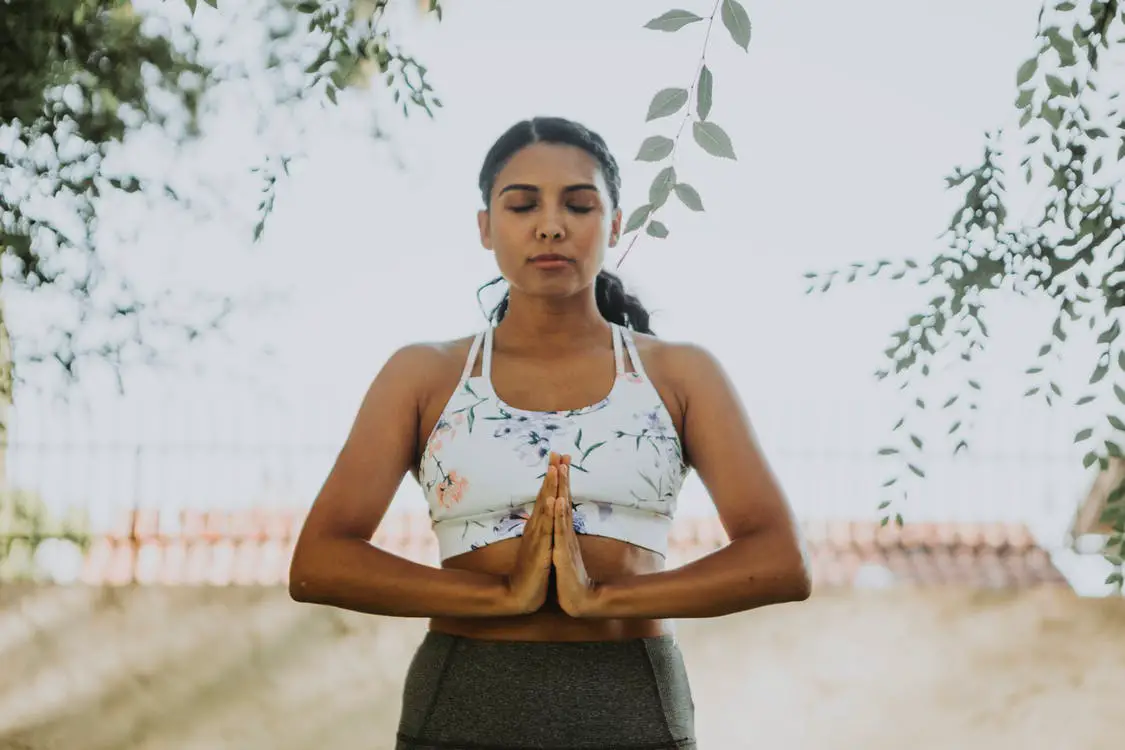
Identify yourself with that silence. That space. Consciousness itself. We continue – like that silence – to notice our inner voice . Noticing such an object as thinking is the ‘I am – realization’ (so not thinking itself: Descartes was just wrong).
- There is the voice, my inner dialogue.
- There are my thoughts.
- And here I am, listening to it.
- Without judging.
- Just observing the thoughts. Observe them with a smile. Don’t make any changes. No judgment. Let go of the need to understand them and just observe your thoughts.
- This realization of your own presence is not a thought, but ‘being’. You may call it calmness, stability in the background, peace or mere consciousness. This is the experiencer. It’s timeless. You cannot know it because it is not an object, but you can know it as yourself.
- Also be aware of the thoughts as well as the ‘person observing’ , the ‘silent spectator’ or ‘witness’. Observe this in silence. You are that silence / space in which both the thoughts and the witness reside.
- With your next breath, let go of any thoughts and concerns you may have carried in this meditation. As you exhale, you simply let them go. Any thoughts and concerns that are holding you back from being in this moment. Let them go with this exhale …
7. Noticing your breath as an object
Breathing is the most common object to meditate on. It is the smallest act with the greatest possible effect.
- Bring your attention inward … to your breath. And as you exhale, allow your eyes to gently relax more deeply.
- Notice your breath … how it enters … and how it leaves your body.
- Consider using the following breathing exercise instructions to use your breath as a tool for getting into the here and now.
8. Noticing your emotions as objects
The thoughts were an interesting object. Now let’s discover one more object …
- Feel your emotions too, but without analyzing.
- Feel your emotions now or you will eventually experience them in a physical way. Don’t judge or analyze. Feel the emotion.
- Allow everything, including gloom and trauma that you are experiencing. Just dare to sit with it and no longer distract yourself with activities.
- Observe the reaction. Be something much stronger: the silent spectator behind it, born of a place of stillness and wisdom. You are now dealing with it dissociated. You know that emotion or feeling is there. You are the knower of this, the observer, not the condition being perceived. Even though a storm of emotions has blown up within you, even then this witness remains calm, unharmed, clear and omniscient, right in the eye of the storm.
9. Noticing your physical sensations as an object
Also notice another kind of object …
- Physical sensations. Also notice any unpleasantness and irritation. Give them space. With a smile. Don’t make any changes. No judgment. Let go of the need to understand them and just observe them.
10. Using sensory acumen for objects to meditate on

Do the NLP / Mindfulness Exercise for Sensory Acumen Now . We are going to give this exercise an extra boost below after you have done it. Let’s start with using all our senses in a normal way:
- Presence allows you to enjoy the beauty of nature and everything around you. Have you ever really looked at the stars in awe of their absolute silence and vastness? Really listened to the sound of a mountain stream in the forest? Or to the song of the birds?
- I ask you in a moment, in this sacred moment that we share together, to use all of your senses … and to pay attention … to what you see … to what you feel … to what you hear … Use your senses fully. Be where you are.
- We start with our eyes. Look at an object, such as a ray of light, with a lot of interest, almost curiosity. Give your full attention to the object and the details. Can you omit your thinking from perceiving? Without the voice in your head making comparisons, drawing conclusions, or trying to understand something? Look around, look around, just look, just look, don’t interpret. See the light, the shapes, the figures, colors, textures, the appearance of things. Let your alert attention light up every thing in your environment one by one.
- When you are outside, look at a tree, a flower, a plant. And see the silence and calm in it … How deeply rooted they are in ‘being’. Let nature teach you about calm and silence. When you look at the calmness in a tree, you become calm yourself. You make a connection with it on a very deep level. You become one with that which you perceive through calm. Feeling that oneness of yourself with all things is love.
- Listen to the sounds around you and the sounds in the distance. Don’t judge it. Allow every sound to be what it is without interpretation.
- When there is silence or space, listen to it. Pay attention to it. Note that while you are listening to the silence, you are not thinking. You are aware, but you are not thinking. This is spiritual awakening, presence. Pay attention to the underlying silence when you walk somewhere, and that dimension will manifest in you as well. Paying attention to outer silence creates inner silence, so listen to the silence beneath the sounds. Be aware of the silent existence of everything. Be aware of the silent presence of every thing. Pay attention to the silence. Silence allows the sound to be there. All sounds arise from silence and die in silence, and during their existence they are surrounded by silence. The same with something and nothing. Matter is an illusion. Molecules and atoms are empty.
Silence contains tremendous power. “Hence the statement: silence is the language that God speaks.” Even the entire energy field of your body is still, but alive.
- It doesn’t literally have to be quiet around you. You can also accept the noise as it is and let go of your inner resistance to the noise. This acceptance of the moment as it is also brings you to inner peace and tranquility.
- Can you feel the presence of the unmanifest? Listen to the sounds.
- And how does your body feel? How is your body supported? Simply pay attention to this.
- Touch something and acknowledge it is there. Let everything be as it is, inside you and outside you. Allow ‘being everything’.
- Also be aware of space, where anything can be. Feel the space around you from your heart. Feel the air. Feel the space in front of you, how far is the wall from you? The space behind you? Are there objects and people? As if you are under water. In an ocean. Space becomes like liquid. This way you know how people move through space, because you feel the ripples and waves in the fluid moving through you. Feel up in the sky. Feel down deep into the earth.
Now we can move on to the next step of sensory acumen: the extra boost is to turn on your peripheral vision. See next section …
11. Extremely strengthen your senses (peripheral vision)

In the previous section, we used all of our senses to notice things. Now we can take this up a notch and become even more vigilant.
Focus on one point in front of you and …
- Start with your vision: Imagine your vision getting even broader – and getting even brighter. It’s like your vision keeps expanding like a blot … while still focusing on that one point right in front of you.
- Do the same with your hearing: you can hear more and more sounds around you … including sounds outside this room, on the street, in the city, in the province …
- You can also feel, smell and taste more and more … You are increasingly able to sense where other people and objects are in space. It is as if the space is completely filled with water and you can sense the waves of every movement of another object or person, so you can feel exactly where they are in the space in relation to you.
For more detailed steps, you can read the dedicated article on peripheral vision.
12. A ‘Beautiful Words Meditation’
Start by breathing … Then say beautiful, honorable, virtuous words for a while. Feel your vibrations change as soon as you say words like …
- Beauty…
- Sunrise…
- Laughter…
- Patience …
- Garden…
- Perfume…
- Forgiveness …
- Softness…
- Decadent…
- Delicate
- Slowly
- Tender
- Lovingly
- Present
- Love…
- I…
13. Feeling your connection with all capacities (your heart as an object of meditation)
Affirm the following heart meditation from Louise Hay:
Deep in the center of my being, is an infinite source of love , an infinite source of joy , an infinite source of wisdom , an infinite source of peace .
This is true. For everyone. We wonder how often we associate with it. Just for a moment, I would ask you to close your eyes. Take a deep breath and go to that place in you where there is infinite love , where it has always been and always will be. And feel that place of love in you, and let it grow and get bigger.
Take the instructions in the above paragraph and do the same with the place of joy, wisdom, and peace.
“I am filled with {love} and I am sharing it today!”
You may want to search this article on your intuition and this article with heart exercises for more heart meditations.
14. Feeling gratitude
Also be aware of other things you are grateful for, such as relationships and skills.
- What are you happy, proud and / or grateful about in your life?
- What makes you grateful?
- How does that make you feel?
15. Open awareness to objects to meditate on …
You can see this as a free form of meditation. You open up to everything that is there and what happens spontaneously. You allow what happens.
If it is your breath that you suddenly become aware of, then you have full attention to it. Is it suddenly a sound, thought, tension in your body or emotion, then you have full attention to it… Until you become aware of something else again.
Let everything be there and observe it.
Now feel for yourself for which object you have the need to perceive it. So pay attention to one or more of the following objects:
- Thoughts / inner voice …
- Emotions …
- Physical sensations …
- Breaths …
- What you see, hear and feel …
- Fears …
- Desires …
- Nice words…
- Your heart…
- The feeling of gratitude …
- … As they appear to you in the present. What is going on in you right now? Observe this in silence and with a smile.
16. Dealing with involuntary thinking and judging (of the inner voice)

Maybe thoughts come up and you don’t want to. You may want to read the comprehensive article on worrying and dealing with thoughts . In addition, you can realize the following when it comes to dealing with your thoughts to get peace of mind:
When you engage in unconscious behavior, the most effective, even the only thing you can do is become aware of it. Become aware that you have those thoughts. Observe that tendency of the mind to want to escape the now. The mere perception of thinking creates a new dimension of consciousness: a higher consciousness. Negativity, unhappiness, or leading means that there is resistance. Resistance is always unconscious. So become aware of it.
All you have to do is become aware of unconsciousness. If you can observe something in you, it means that you are already aware enough. You don’t have to change anything after that, otherwise you will be in a dilemma and it implies: “Something is wrong with me and I have to fix it”.
Noticing that, for example, your leg is vibrating automatically causes it to stop. No one is going to consciously vibrate their leg. Noticing that you are unkind with the present moment, that you don’t pay attention to people, for example, does not mean that something is wrong with you, but that you are completely fine.
If there was something really wrong with you, you wouldn’t even know! Really sick people don’t think there is anything wrong with them. They have no idea. These are, for example, the people with bombs and machine guns.
Besides awareness, what else can you do against involuntary, unconscious behavior, such as thinking and judging while meditating?
- Is the mind still active? If your attention is diverted , if you get other thoughts, or if those thoughts take you away from the exercise, that’s absolutely okay .
- In fact, that’s very normal. That’s what the mind does. It creates thoughts, and it wanders.
- When you notice that is happening, you can just observe what exactly those thoughts are. What exactly is that derivation?
- Don’t judge it to be right or wrong. Just observe it.
- Observe your thoughts, the voice in your head. Without judgment! That judgment is different from that voice that came back through the back door.
- Look non-judgmentally at your voice in your head. Be there as the watchful presence: the realization of “I am.”
- You no longer identify with the voice. You identify with the silence and space in which the voice takes place.
- Let the mind be active. Just accept it. Let it be. What you accept, you get over it. That is a miracle. What you fight stays.
- Don’t suppress your thoughts: they need attention to survive. But see its transparency.
- If it doesn’t work out so far, just knowing you’re not present is presence. The moment you realize that you are not present, You are present.
- See the thoughts come and go like a cloud. Watch them float by. It comes and goes. Be aware that it is floating by, but don’t judge yourself for it.
- Look at the thought, feel the emotion, observe the reaction. Then you feel something stronger than all those things you perceive: the silent, perceiving presence behind the contents of your mind, the silent spectator.
- Let negative things, such as noises, insults, pass through you as if you were transparent.
- When you fully accept dissatisfaction, it becomes peace.
- Surrender! True surrender is feeling light, clear and peaceful.
- When your attention is distracted, you think about other things or fidget: focus again on your breathing.
- Conscious breathing is all it takes to get into the here and now.
- Exhale the thought.
- Think of the thought as a wave on the ocean, powerful at first but eventually turning to nothing. Prepare for the wave, so don’t fight it.
- Or you can look at a flower in a state of intense alertness so that no mental commentary can arise at the same time. Your thoughts automatically stop when you are intensely present.
- ask yourself: what would my next thought be? Then become very alert and watch the thoughts, like a cat waiting for a mouse to come out of its mouse hole. What will my next thought be? Which thought comes from the mouse hole? ……………. That takes a long time. Excellent! As soon as your consciousness drops below a certain level again, the thoughts come back, and you lose yourself again in time, the silence is gone, there is noise, you are back in time.
- Count the thoughts that pass by.
- Think of the Zen master hitting his student from behind with a stick. When the student is hit, he is lost in thought: not present.
- When the going is tough and it makes you nauseous: You felt the emotions you were not aware of until you put some attention on your body. Being present is: Fully observe the emotion and accept it as it is.
- Let there be thoughts and mental noise. It is incredible how quickly we resolved what we fully allow.
- Are you having problems NOW? Not tomorrow, not in 5 minutes, now.
- Surrender to ‘what is’.
- Mentioning facts is always powerful. Instead of making up stories about it, see ‘what is’.
- Allow ‘what is’ to be as it is. Thinking is fleeing from and resisting what is now, so that it doesn’t have to allow it. This is the compulsion to think.
- Every thought wants your attention. It pretends it is very important. The spiritual practice is: see your thoughts for what they are. Don’t take them too seriously.
- Become deeply aware of the now by giving a routine activity your full attention.
- You can ask yourself: Am I comfortable right now? What’s going on in me right now?
- When you see a thought, meet that thought with a smile and bring your attention back to your breath with a smile and lots of love.
- If you feel impatience, return to the anchor of your breath.
- And then very lovingly park it somewhere. Then, with a smile, return your awareness and your concentration to your object of meditation, such as a breath.
17. Body scan – Being mindful of the body
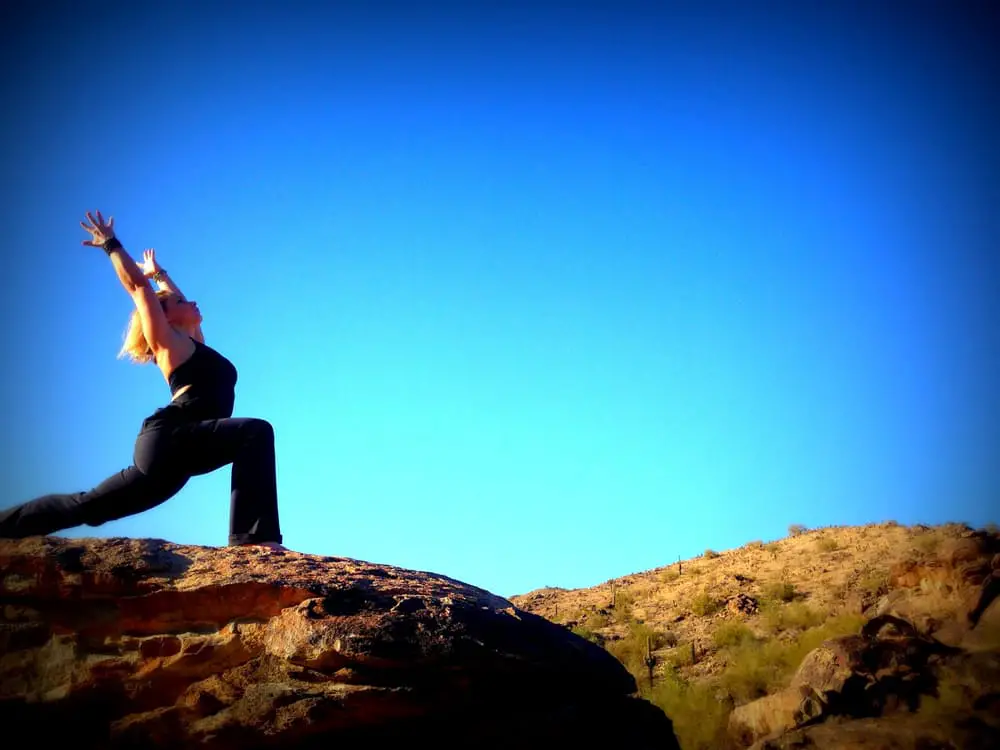
Do the body scan , from the official mindfulness MBSR curriculum, before and after sleep: Awaken your body. Be intensely present. Feel your life energy in those body parts.
- Focus your attention inward, into your body. Feel it inside. Is it alive? Is there life in your hands, arms, legs and feet, in your abdomen and in your chest? Move your toes and your fingers.
- Feel your body inside. Is it alive? is there life in your arms? legs etc? Can you feel the life in you? Do you feel a tingling sensation? Your body comes to life. Every cell becomes alive.
- Focus on each part of the body for 15 seconds. Do you feel the subtle field of energy that pervades the entire body and gives vibrant life to every organ and cell? Feel it. Go deeper into that feeling. Become one with it.
- We choose a body part again. Keep your attention there. For example your hands. Connect with the inner energy field of your body. This is very healing. Feel the energy field in one of your hands. Hold up one of your hands without opening your eyes or moving your hand. “How can I know I have a right hand?” The hand doesn’t move, and you don’t see it, but you feel a liveliness there. It feels good. Do the same with the other hand and eventually melt both hands together into a feeling of ‘hand’, and that label of ‘this is a hand’ goes away and you feel life. Slowly feel this life in other parts of the body.
- Then let the attention go like a wave to other parts of the body. Finally, let your attention go completely through your body like a wave a few times very quickly.
- Feel the energy fields in your body the next time you are in a traffic jam, for example. Instead of moving away from that place, turn to that moment by going inside your body. See what a nice effect that has.
18. Sing a mantra
Maybe you know a beautiful chanted mantra. You can put on the song and sing along or you can pick up your guitar or piano yourself. For example ‘In the light of love’ by Mitten.
Below you will find the lyrics and chords:

19. Die before you die

In ‘Die before you die’ we meditate on transience. Your body decays. Your thinking also dies. Feel it. But you are still there, your radiant self: nothing ever died. Or rather, the only thing that is real has not died. Die before you die is also an exercise for gratitude in a way:
- At the very core is the sacred, The immeasurable, that for which there is no name.
- Enter the realm of purity.
- Manifested world: name, past, life situation, future.
Inward looking: aware of its own source, the unmanifested.
You have had a glimpse of yourself that is out of this world. - The secret of life is to die before you die, only to find that there is no death.
- See, in the eye of your mind, that you are going to a loved one’s funeral.
- See yourself driving to the funeral home, parking the car, and getting out of the car.
- As you enter you notice the flowers and the soft music playing.
- You see the faces of family and friends.
- You feel the sadness of losing, the happiness of having known, that radiates from the hearts of the people who are there.
- As you walk to the center of the room and look into the chest, you suddenly come face to face with yourself. This is your graveyard. 3 years after today.
- All of these people have come to honor you, to express feelings of love and appreciation for your life.
- As you take a seat and wait for the service to start, look at the program booklet in your hands.
- There are 4 speakers.
- The first belongs to your family.
- The second is one of your friends. Someone who can express something about what you were like as a human being.
- The third is someone from your work or profession.
- The fourth is someone from one of your associations or something similar where you were involved.
- Think deeply now. How would you like all these speakers to say about you. What kind of mother, father, husband, son, daughter, friend, colleague would you like to see reflected in their words. What kinds of contributions, what achievements would you like them to remember.
- Take a good look at the people around you. What difference would you like to have made in their lives.
- Where is your funeral?
- Which day of the week? At what time?
- How’s the weather?
- See the building where the ceremony is held.
- See people arrive.
- Who are all coming? What are they wearing?
- Enter the building. Do you see flowers?
- Smell the scent of the flowers.
- See people come through the door. What do they think?
- What kind of chairs are they in? How do the seats feel?
- What do they think?
- Watch them emerge one after the other. What do they say?
- What kind of remorse do they have for you?
- What did you want to hear them say?
- What kind of self-blame do you have for yourself?
- See people follow your chest to the graveyard.
- All people of all ages get tears in their eyes.
- You could be affected by it.
- Open your eyes.
- What you just saw is what you are going for. If you were to die today and have the exact same funeral, you are living an inspired life. Keep it up! If, on the other hand, you think such a tribute is unlikely, then there is still work to be done. You are lucky. This wasn’t real: you now have the same kind of feeling as if you just found your keys, but a million times more powerful. You have your whole life back: it will take a while before your funeral actually takes place.
20. ‘Future Pacing’ the results of this guided meditation text
Bring your prayer and mindfulness through the day. Don’t leave it in your room. Simply state the intention for this and it will happen.
Let the whole world be your meditation classroom. It is easy to be mindful and aware in formal Yoga or meditation moments. The real lesson, though, is to ‘be here now’ when you’re late for work, take the stairs down to catch the metro, and greet your cashier. The whole world is our classroom, especially the moments we enjoy the least.
However contradictory it may seem, you can also future pacify ‘being’ .
- From now on, give your full attention to certain actions. Pay attention to all sensory stimuli from that action.
- Express the intention of bringing your meditation vibes into your day.
- Picture yourself in a future situation where you would normally be impatient and unaware of the here and now. See yourself ‘being!’ “I was not waiting. I had a great time. I experienced this environment. ”
- You make a ‘stretch’. In the beginning you are always very briefly in the now before you go back to your mind, but in the end you are more and more in the now.
The guided meditation text meditation is now over. Be thankful for yourself!
21. Remain mindful during the transition from meditation to another activity
Notice what happens to you when (you hear that) the exercise is over. What kind of automatic tendency do you get? Are you able to notice this in yourself?
Additional list of 40 additional meditation exercises
Here you will find my personal meditation routine. I keep picking out some to do.

- Observing your thoughts. Like a cat looking at a mouse hole, “What’s my next thought?” You could also count them or you could ‘measure’ how much time there is between thoughts.
- Noticing, acknowledging and feeling your emotions (click!). In the same link you will find a meditation text in the last step to then release all those emotions.
- Physical sensations in your body.
- Body scan without opening eyes and without moving. If you can feel that you have a hand without doing those things, you are aware.
- Look at your hands and your body.
- Be a mountain.
- Do a transcendental meditation.
- Breathe in what you want to be, breathe out what you are not. When you exhale, anything that doesn’t belong to you goes out of your body.
- Breathe.
- Self-love meditation.
- Heart meditations.
- Get in touch with your heart, for example by placing your hand on your heart and through the exercises for your intuition. Feel your heart: that’s who you really are.
- Do the meditation and visualization exercises of the law of attraction.
- These 80+ mindfulness exercises.
- A song.
- A poem.
- A word.
- An act / activity, for example a random act or kindness.
- Silence.
- Ask what you need. For example to the angels.
- Ground yourself.
- Throw in a hypnotic relaxation .
- Do a healing travel meditation.
- Do chakra meditations, such as connecting your third eye to your heart chakra.
- Clean your aura.
- Don’t think about anything.
- Dynamic meditation. Take the Kundalini shake for example.
- Sensory acumen.
- Adopt an attitude of non-judgment . Accept everything about yourself. Let it be, it may be there, no longer fight against yourself and do not judge anything you do unwanted.
- Do Tony Robbins’ morning meditation, which he calls “priming.” You can find it in the article about your morning routine.
- Make affirmations. Choose a quality that you want, such as tranquility or focus. Add ‘I am’ to that. For example, “I am … rest.” “I am … focus.” ‘I’m a.’ Combine this with breathing. See next point.
- Breathing in combination with one-word mantras. In: “I am.” Off: (For example) ‘Calm.’
- Let each inhale symbolize what you want more, and each exhale symbolize what you want to release. Breathe in what you want to be. Exhale what you are not.
- Theistic Meditation: Saying a mantra 95 times, like Ohm. A mantra focuses your attention. Choose a mantra (such as: ‘I am the universe / Aham Brahmasmi’) and say it out loud a few times, then in a whisper and finally in your inner voice or singing.
- Are you in a joint meditation? Then have everyone stand up and give each other a message of peace, such as “I wish you peace” or “I greet the place of peace in you (Namaste)”.
- Do a meditative NLP technique or related technique, such as the MIR method , a Whirlwind visualization, and a Swish exercise.
- Theistic Meditation: Grab your favorite prayer book and say a prayer. Maybe one for healing, for a deceased or for peace.
- Commemorate a deceased family member or friend.
- Do a dynamic meditation.
- Dance together.
- Strike a singing bowl and listen to it. As Alan Watts said, “The reality is {strikes singing bowl} … the wind along your cheeks, the distant sounds, the sun’s rays on your skin …”
- Attend a Yoga class.
- Ground yourself. Feel how you are carried by the ground.
- Draw an inspiration card .
- Ask to get answers in your dreams.
- Read more about types of meditation. Contemplation is also a kind of meditation, where you think about God or reflect on a text, for example. Do this with your feet firmly on the floor and your hands on your lap.
- Do voice exercises for a deeper voice that goes through your entire body.
- Drifting back to pre-birth in thoughts on your timeline. This is the ultimate reframing. From this position you view everything from the wisdom of the source.
- See if you can find additional meditations on this page, to let go of fear (ego) and connect with unconditional love (soul).
- Look at your body and feel it. Follow your creative flow. Lots of movement. Movement to take action.
What is your meditation routine? Let me know in the comments.

![5 Best Self Care Tips For College Students [#1 Advice]](https://happyrubin.com/wp-content/uploads/2021/09/the-best-self-care-tips-for-college-students-440x264.jpg)
![How To Stick To New Year’s Resolutions: 9 Tips [Smart & Sure Ways]](https://happyrubin.com/wp-content/uploads/2019/12/tips-voor-goede-voornemens-440x264.jpg)
![How To Stop Being So Hard On Yourself [9 Great Tips]](https://happyrubin.com/wp-content/uploads/2019/12/we-moeten-zoveel-van-onszelf-en-anderen-150x150.jpg)

![19 Best Ice Breaker & Get-To-Know-Eachother Games [Fun & Simple]](https://happyrubin.com/wp-content/uploads/2018/02/leukste-ijsbrekers.jpeg)
![Becoming More Social: 41 Tips [Improving Social Skills] [List]](https://happyrubin.com/wp-content/uploads/2018/06/sociale-vaardigheden1.jpeg)
![How to start a conversation with anyone: 15 tips [Making contact]](https://happyrubin.com/wp-content/uploads/2017/08/gesprekstechnieken1.jpeg)
![372 Friend Tag Q&A Questions [Best Friend Quiz]](https://happyrubin.com/wp-content/uploads/2019/05/best-friend-tag-vragen-voorbeelden.jpg)



![Clingy & controlling behavior of partner/date [Extreme examples]](https://happyrubin.com/wp-content/uploads/2020/06/claimerig-gedrag-van-partner-eigenschappen-en-voorbeelden-150x150.jpg)

![How to recognize if a man is in love [Signals & his body language]](https://happyrubin.com/wp-content/uploads/2020/05/verliefd-gedrag-van-mannen-herkennen-150x150.jpg)


![Free will and religion / theology [Verses & Quotes on free will]](https://happyrubin.com/wp-content/uploads/2020/10/religion-on-free-will-quotes-1050x640-1-150x150.jpg)
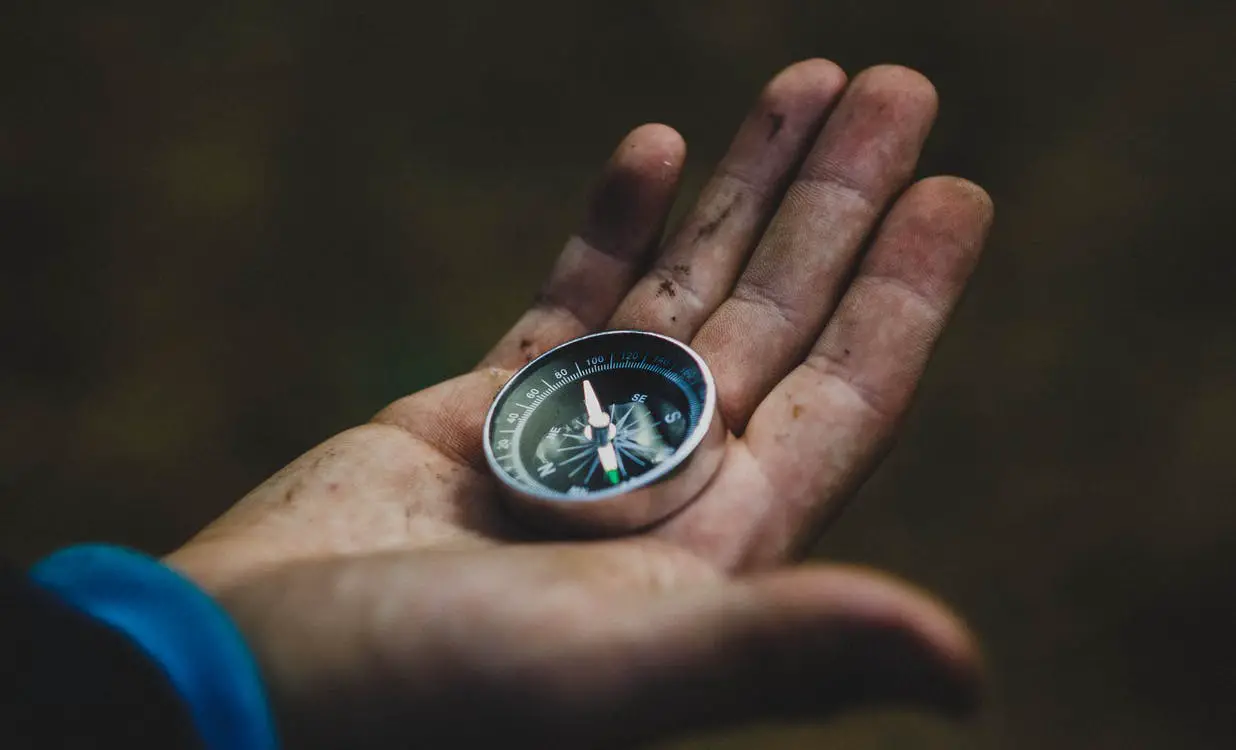
![Dealing With Setbacks & Hardship [Lessons & Examples]](https://happyrubin.com/wp-content/uploads/2018/11/omgaan-met-tegenslag-tips-hoe-dan.jpeg)
![NLP Agreement Frame: Use these exact sentences [Examples]](https://happyrubin.com/wp-content/uploads/2020/10/agreement-frame-nlp-1125x640-1-440x264.jpeg)
![122 Best Comebacks In Any Situation [Best Examples]](https://happyrubin.com/wp-content/uploads/2020/06/beste-comebacks-technieken-tips-440x264.jpg)
![Using Hypnosis to Stop Smoking [HowTo]](https://happyrubin.com/wp-content/uploads/2020/05/stoppen-met-roken-door-hypnose-150x150.jpg)
![Presuppositions language pattern: meaning & examples [NLP]](https://happyrubin.com/wp-content/uploads/2020/04/wat-zijn-vooronderstellingen-150x150.jpg)
![Peripheral Vision: Meaning & Exercise [Essential Skill]](https://happyrubin.com/wp-content/uploads/2020/04/perifeer-zicht-trainen-tips-150x150.jpg)

![How To Start A Coaching Business [21 Smart Tips]](https://happyrubin.com/wp-content/uploads/2018/11/coachingpraktijk-starten-tips.jpeg)
![How to make dreams come true? [33 tips to realize dreams 100%]](https://happyrubin.com/wp-content/uploads/2018/05/dromen-mijlpalen.jpeg)
![How To Become Rich? 27 Millionaire Tips [Guaranteed To Work]](https://happyrubin.com/wp-content/uploads/2018/01/hoe-kan-ik-rijk-worden.jpeg)
![77 Best Online Marketing Tools [Recommendations] [Also Free]](https://happyrubin.com/wp-content/uploads/2018/08/beste-onlne-marketing-tools-tips.jpeg)
![Complete List Of Virtues & Qualities [Including Explanation]](https://happyrubin.com/wp-content/uploads/2018/12/kernkwaliteiten-uitleg.jpeg)
![Being Attentive: How Do You Do That? [Meaning & 9 Tips]](https://happyrubin.com/wp-content/uploads/2019/05/attent-zijn.jpg)
![Being Conscientious: Meaning Of This Virtue [Explained]](https://happyrubin.com/wp-content/uploads/2018/07/Consciëntieus-persoon.jpg)

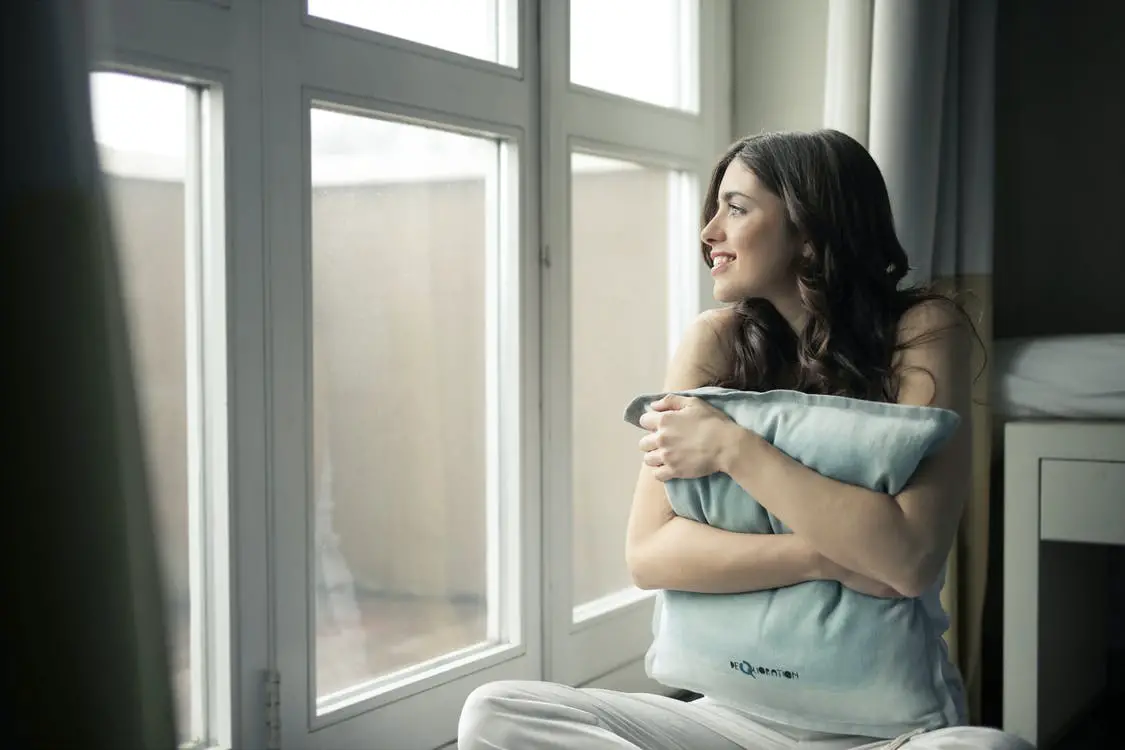
![Best Books About Burn-Out [Top 10] [Update 2025]](https://happyrubin.com/wp-content/uploads/2020/06/beste-boeken-over-burnout-lijst-440x264.jpg)
![Best Self-love Books [Top 10] [Update 2025]](https://happyrubin.com/wp-content/uploads/2020/04/beste-boeken-over-zelfliefde-aanraders-440x264.jpg)
![Life changing books: 10 books that change your life [2025 Update]](https://happyrubin.com/wp-content/uploads/2020/03/levensveranderende-boeken-tips-150x150.jpg)
![Top 10 Best Books: Recommendations Per Genre [2025 Update]](https://happyrubin.com/wp-content/uploads/2019/12/best-books-per-genre-150x150.png)
![Best Books On procrastination: Must Reads [List] [2025 Update]](https://happyrubin.com/wp-content/uploads/2019/11/beste-boeken-over-uitstelgedrag-tips-150x150.jpg)
![Joe Dispenza: Events To Attend [2025 & 2026] [All Info]](https://happyrubin.com/wp-content/uploads/2020/02/joe-dispenxa-events-440x264.png)
![Best Online Study Options [Online Education Top List]](https://happyrubin.com/wp-content/uploads/2019/03/best-home-study-options-440x264.png)
![Teachable Review & Experiences 2025 [Bad Online Training Tool?]](https://happyrubin.com/wp-content/uploads/2020/02/Teachable-review-ervaringen-150x150.png)
![Audible Review, Experiences & Special Discount [Scam?]](https://happyrubin.com/wp-content/uploads/2020/01/audible-review-ervaringen-150x150.png)
![Guest Posts Wanted [Free & Always Directly Accepted]](https://happyrubin.com/wp-content/uploads/2019/05/gastbloggen-regels.jpg)
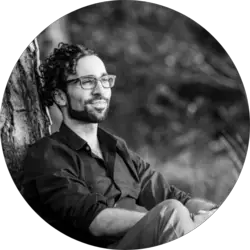
Just a thank you!
You are very welcome!